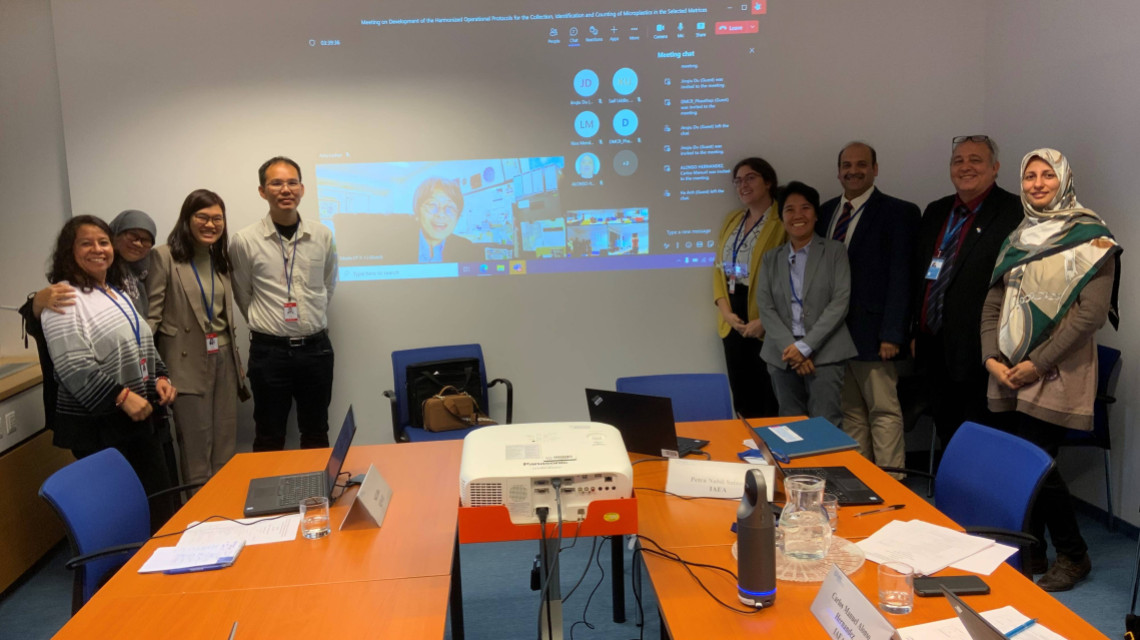The majority of microplastics, microbeads and single-use plastics in our oceans come from land-based sources and are transported to the sea from rivers and coastlines. Today, marine plastics affect more than 800 marine species and could potentially harm human health as these plastics enter our marine food chain. The need to radically reduce marine plastic pollution is specifically articulated in the United Nations’ Sustainable Development Goal 14. However, experts have found it challenging to reach conclusions about the presence and distribution of ocean plastics in their regions, because of different sample collection and preparation techniques, as well as the different units used to measure and log results.
To help harmonize guidelines for the sampling, separation and identification of microplastics in beach sands, seawater and marine sediments, the IAEA within its NUTEC Plastics initiative held a regional meeting with experts in Asia and the Pacific on 15-18 November 2022. NUTEC Plastics supports marine monitoring, using isotopic tracing techniques.
"A harmonized protocol for microplastic monitoring is vital for my country to strengthen its efforts to combat this emerging concern and understand the sources or sinks of microplastics in the environment," said Norman Mendoza, a Senior Science Research Specialist at The Marine Science Institute, University of the Philippines who attended the regional meeting.
Through an ongoing regional technical cooperation (TC) project[1], the IAEA is helping countries in the western Pacific rim to develop harmonized criteria and standards to ensure proper generation of their marine plastic pollution data and analysis, and eventually that their conclusions are well-aligned. This in turn will equip government decision-makers with the tools needed to develop and institute evidence-based policies to mitigate the effects of climate change.







